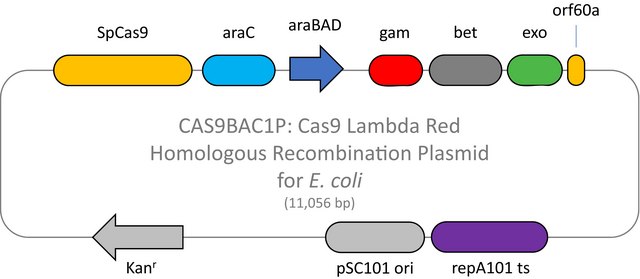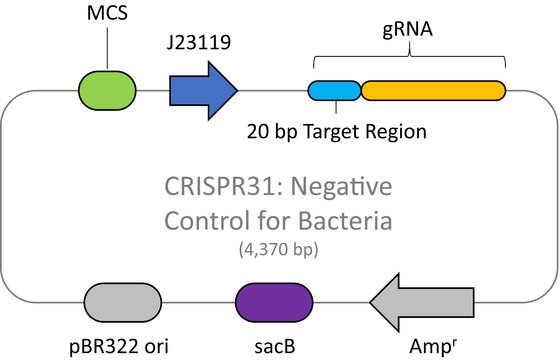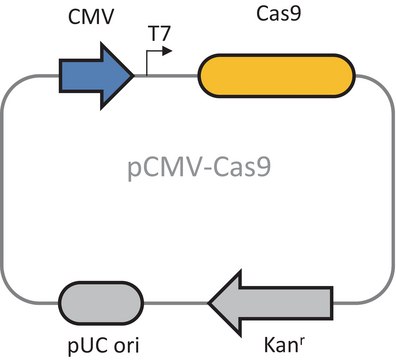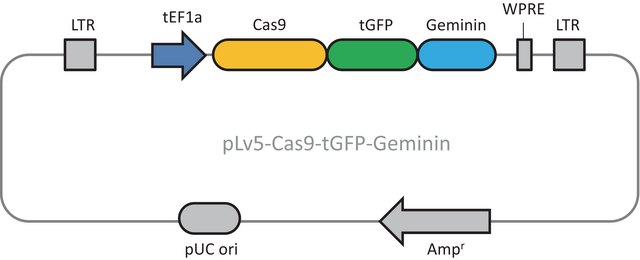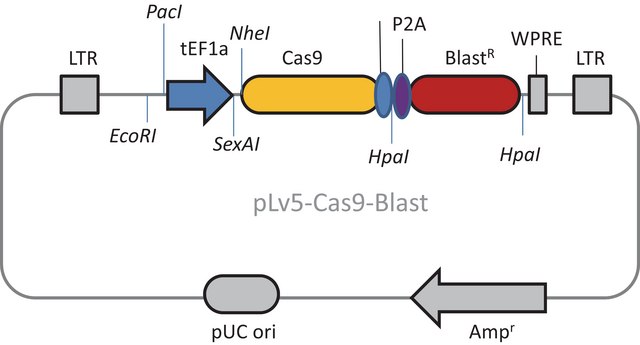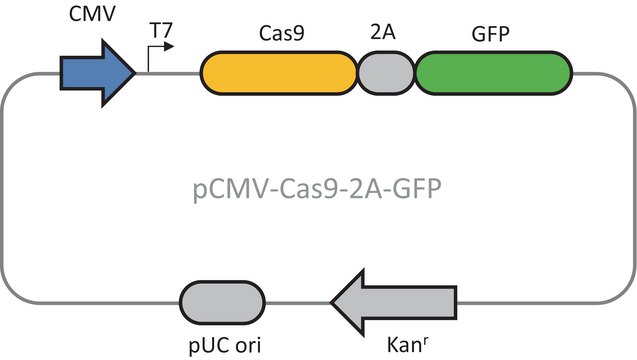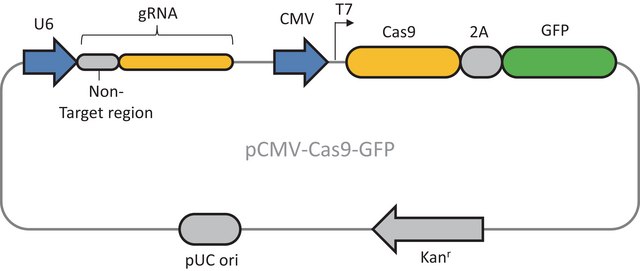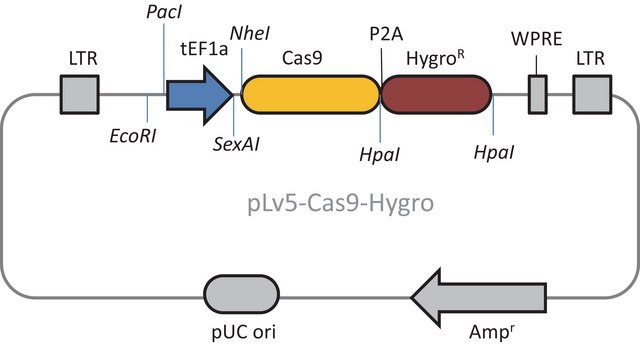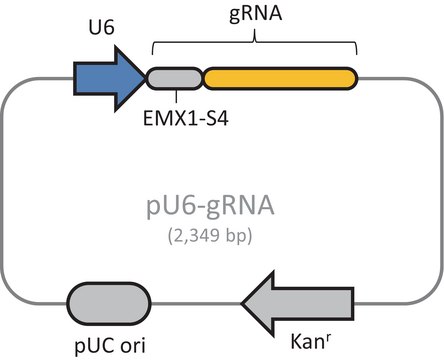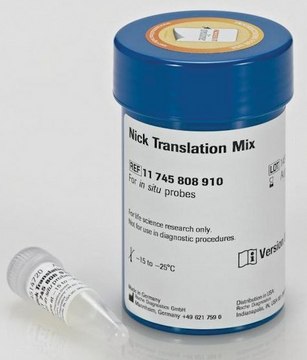选择尺寸
选择尺寸
About This Item
推荐产品
表单
liquid
包装
vial of 50 μL
浓度
20 ng/μL in TE buffer; DNA (1μg of purified plasmid DNA)
技术
microbiological culture: suitable
应用
CRISPR
genome editing
启动子
Promoter activity: constitutive
运输
dry ice
储存温度
−20°C
1 of 4
此商品 | 11745816910 | 11745808910 | 11685597910 |
|---|---|---|---|
| technique(s) hybridization: suitable | technique(s) hybridization: suitable | technique(s) nucleic acid labeling: suitable | technique(s) - |
| form solution | form solution | form solution | form solution |
| storage temp. −20°C | storage temp. −20°C | storage temp. −20°C | storage temp. −20°C |
| Quality Level 100 | Quality Level 100 | Quality Level 100 | Quality Level 100 |
| usage sufficient for 40 labeling reactions | usage sufficient for 40 labeling reactions | usage sufficient for 50 labeling reactions | usage sufficient for 20 reactions (transcription) |
| packaging pkg of 160 μL | packaging pkg of 160 μL | packaging pkg of 200 μL | packaging pkg of 40 μL |
一般描述
Here we present a novel dual-vector CRISPR/Cas-mediated λ-Red system for improved recombineering in E. coli. Our system is shown to facilitate homology-directed repair of DSBs created by Cas9 endonuclease, enabling genetic alterations through chromosomal integration of a donor DNA.
This plasmid is to be used in combination with the Cas9 Lambda Red homologous recombination plasmid for E. coli (CAS9BAC1P) as the positive control for your custom gene editing experiment. The custom gRNA (CRISPRBACD) can be designed and ordered through https://www.sigmaaldrich.com/pc/ui/genomics-home/customcrispr
The CRISPR LacZ Positive Control Plasmid for Bacteria (CRISPR30) contains a gRNA spacer targeting the lacZ gene in wild-type E. coli expressed constitutively from a J23119 promoter, a ampicillin resistance marker, a pBR322 origin of replication, and a sacB gene from Bacillus subtilis for counter-selection-based curing.
应用
- HR-mediated recombineering for mutation or SNP analysis
- Creation of HR-mediated knock-in cell lines with promoters, fusion tags, or reporters integrated into endogenous genes
- Creation of gene knockouts in E. coli cell lines
Strain Optimization
特点和优势
Markerless: does not require antibiotic resistance marker insertion
Scarless: no scar sequences from marker excision which often cause off-target recombination
Multiplexing: multiple custom gRNA sequences can be used at a time
原理
储存分类代码
12 - Non Combustible Liquids
WGK
WGK 2
闪点(°F)
Not applicable
闪点(°C)
Not applicable
法规信息
历史批次信息供参考:
分析证书(COA)
商品
E. coli CRISPR/Cas-mediated Lambda-Red HR vector system enables gene editing via homology-directed repair.
我们的科学家团队拥有各种研究领域经验,包括生命科学、材料科学、化学合成、色谱、分析及许多其他领域.
联系客户支持